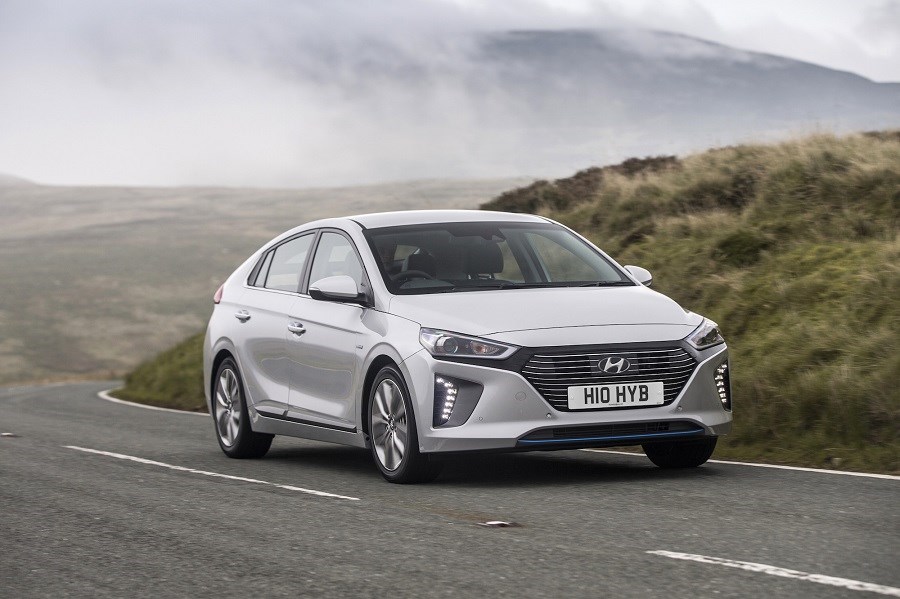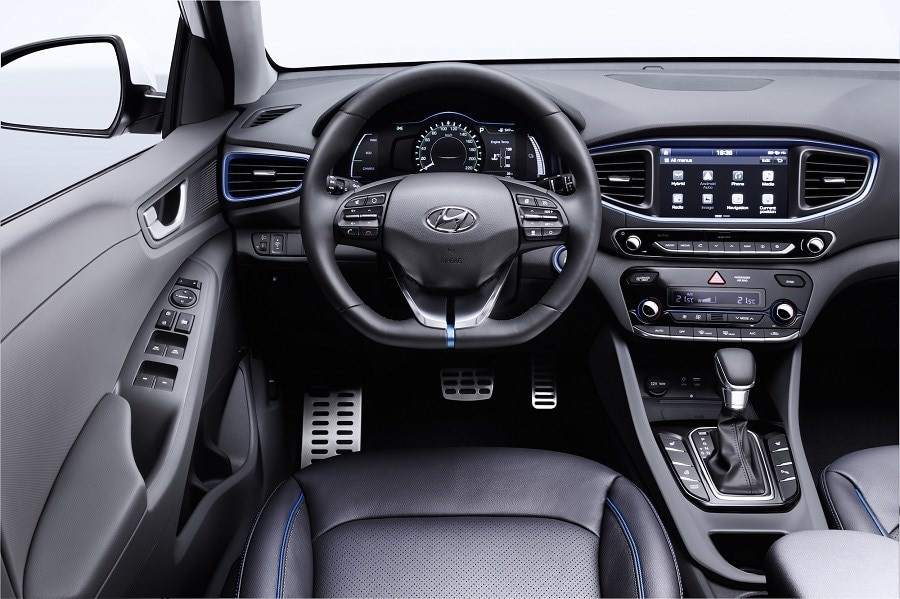Model Review
The Ioniq is Hyundai’s answer to the Toyota Prius, with a combination of hybrid and plug-in hybrid powertrains, as well as a fully electric model.
The car’s 1.6-litre ‘Atkinson Cycle’ engine was developed specifically for hybrid purposes and is the same powertrain that’s used in the Kia Niro hybrid crossover from Hyundai’s sister brand. Power is fed to the front wheels five a six-speed dual clutch automatic transmission.
Introduced in 2016, the Ioniq is one of the most aerodynamic cars ever made, with a drag co-efficient of 0.24Cd. Its eco-credentials have made it a big hit in the USA, where it competes very closely with the established Toyota in the sales charts—though in Europe the model has yet to find its true identity, with limited numbers on the UK’s roads.
Incidentally, the Ioniq name is a portmanteau of ‘Ion’ and ‘Unique’ - one for the pub quiz…
Latest model
Of the two Ioniq variants covered in this review, the plug-in hybrid is the most recent, having joined the range in late 2017. The hybrid Hyundai differs from other plug-ins because it uses a dual-clutch six-speed transmission, rather than the CVT systems normally found in PHEVs, which gives it a more conventional driving experience.
Under the skin, the Ioniq plug-in features an 8.9kWh lithium-ion polymer battery pack mounted under the back seat, so it has no impact on the available boot space. It offers the best of both worlds, with an electric-only range of 31 miles and an otherwise conventional hybrid drivetrain, but it’s not cheap.
The hybrid Ioniq is much more affordable and still comes with a number of tax and efficiency benefits.
Value for money
The Ioniq model range is pretty straightforward. The standard hybrid has three trim levels and the plug-in just the one.
Of the hybrid models, the entry-level SE stacks up well against its rivals, with good levels of standard equipment and pricing that’s consistent with other hybrid models in the class - compared to the Prius, for example, it offers good value and better equipment, although the smaller Toyota Auris hybrid is a cheaper option.
The Plug-in model makes sense if you can make it work for you. For example, if your daily commute is within 31-miles, the electric-only range would work for you and the £7,000 extra you pay to buy it is probably worthwhile if you keep the car for long enough. Plus, it’s also exempt from congestions charges and compliant with forthcoming clean air zone legislation.
Looks and image
The Ioniq manages to pull off being an eco-car and not being too weird at the same time which is something that has taken the car industry longer than it should have to embrace.
Yet at the same time, it still manages to wear its green credentials up to a point, with unapologetic hybrid badging on the tailgate.
The silhouette is clean and neat to look at, with bi-xenon headlamps and LED taillights even on the entry-level car, marking it out a technology leader.
The car’s profile is bang up to date, while the tailgate features a neat stepped glass area, with two rear screens divided by a boot spoiler that’s as essential for the aerodynamics as it is for the styling.
Speaking of aero, the biggest tell-tale between the standard car and plug-in hybrid (other than the separate filler flap for the charging port) is the smoother-off front grille, which adds vital metres to the overall electric range.
Overall, then, the Ioniq is a smart looking car, without being too pious about its eco-credentials. With customers finally accepting hybrid and PHEV cars as increasingly mainstream, it’s good to see their styling catching up.
Space and practicality
Despite its unconventional powertrain, the Ioniq is a traditional hatchback, which means there are good amounts of space for all passengers, both front and rear.
In the front, the driver has enough seat and wheel adjustment for people of most sizes to get comfortable, although extra-tall drivers may wish there was an extra ratchet of adjustment on the seat sliding mechanism.
The car also gets plenty of stowage space, with door bins big enough to swallow 1.5-litre bottles and cup holders between the front seats.
In the rear, leg room isn’t the best-in-class, but it’s far from dreadful. The location of battery pack in electric and PHEV models means the rear bench can’t be moved, limiting the designers’ options, yet it still has sufficient accommodation for two fully grown adults.
Although the back seat can’t be moved, it does split 60/40, adding flexibility to the boot’s standard 443-litre capacity, though the battery pack and hybrid system does mean that the load bay is quite shallow.
Interior build quality and finish is good, proving just how far the Koreans have come in recent years in terms of fit and finish, though there are still a few examples of hard shiny plastics, most notably on the switches for the electric windows and door mirrors.
Ergonomically, the layout is good, with a large touchscreen capable of mirroring smartphones via Apple CarPlay and Android Auto dominating the centre console.
Engines
The 1.6-litre GDI petrol engine in the Ioniq runs what’s known as an Atkinson Cycle, which is an established way of increasing efficiency thanks to a short compression and long expansion stroke. In layman’s terms, what that means is it puts fuel into the engine more slowly and maximises the time it burns it for, which is good for efficiency but not for performance.
The engine was designed by Hyundai-Kia specifically for use in its hybrid models, where the instant torque of the hybrid drive train, which always retains residual charge thanks to regenerative braking, helps aid the engine’s acceleration in a manner not dissimilar to the KERS system used in Formula One, where kinetic energy recovered by the car can be used to give it an acceleration boost.
With this technology on board, Hyundai can afford for the engine to run efficiently rather than responsively, as the hybrid system more than compensates for any delay in power delivery. It’s clever stuff.
On its own, the 1.6-litre engine delivers 103bhp, but the hybrid set-up offers an extra 40bhp on demand, giving an equivalent power output of 143bhp, which is more or less on a par with most petrol cars of a similar size.
Things to look for
The Ioniq has so far proven very reliable in both hybrid and PHEV formats, with no notable problems. The standard car benefits from Hyundai’s standard five-year, 100,00-mile warranty, while the battery pack is backed by a 10-year, 180,000-mile supplementary warranty.
Rivals
The obvious rival to the Ioniq is the Toyota Prius, in both PHEV and standard hybrid format. The Auris Hybrid is also a good contender, albeit a smaller one. The Kia Niro is an option if you want something a bit bigger, but it’s less dynamic to drive than the Ioniq, which is hardly a polished performance car itself.
The Ioniq PHEV faces stiff competition from the likes of the Audi A3 e-Tron and BMW i3 range-extender, both of which sit uncomfortably close to it in terms of pricing.
Depreciation
Alternatively fuelled cars hold their value well thanks to the tax and air quality benefits of owning such vehicles. Consequently, the vast majority of Uber drivers in central London use Toyota Priuses. Expect to see Ioniqs joining them in the non-too-distant future as they move onto the second phase of their ownership cycle.
As a result of demand for affordable hybrids, an Ioniq will hold its value well, and will still be worth at least half of its purchase price after three years.





